The eVTOL companies landscape has exploded with over 25 flying taxi manufacturers racing toward commercial operations in 2025. These electric vertical takeoff and landing aircraft represent the future of urban air mobility, with companies ranging from well-funded startups to aerospace giants investing billions in revolutionary aircraft technology.
This comprehensive eVTOL companies directory examines certification progress, funding levels, and launch timelines for every major flying taxi manufacturer globally. From Joby Aviation’s advanced FAA certification to emerging players in Asia and Europe, these eVTOL companies are reshaping aviation through innovative aircraft designs and sustainable transportation solutions.
The flying taxi industry has attracted over $15 billion in investment, with eVTOL companies targeting commercial operations between 2025-2027. Understanding which manufacturers lead in certification progress, technology development, and market positioning becomes crucial as the industry transitions from prototypes to passenger services.
Top 10 eVTOL Companies by Certification Progress
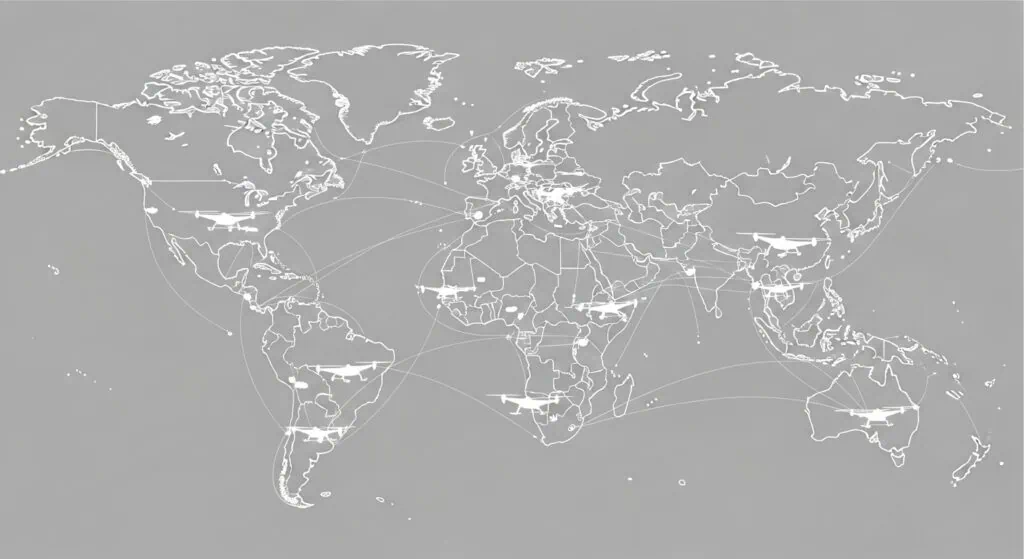
1. Joby Aviation (USA)
FAA Certification: 70% complete (Stage 4) Funding: $2.2 billion raised Expected Launch: Early 2026 Aircraft: S4 (4 passengers, 150-mile range)
Joby Aviation leads all eVTOL companies in certification progress, having completed the majority of FAA Stage 4 requirements. Their methodical approach prioritizes safety validation over speed, building regulatory confidence through extensive testing protocols. Toyota’s $1 billion investment provides manufacturing expertise essential for scaling production.
The S4 aircraft represents Joby’s flagship design, capable of 150-mile range with four passengers plus pilot. Company partnerships with airports and pilot training programs demonstrate operational readiness beyond aircraft development. According to FAA documentation, Joby maintains the most advanced powered-lift certification timeline among all applicants.
2. Archer Aviation (USA)
FAA Certification: 60% complete Funding: $1.8 billion raised Expected Launch: Late 2025 Aircraft: Midnight (4 passengers, 100-mile range)
Archer Aviation pursues aggressive manufacturing scaling through strategic partnerships with Stellantis, leveraging automotive production expertise. Their business model targets airline partnerships rather than direct passenger services, reducing operational complexity while building market presence.
United Airlines’ $150 million investment includes aircraft purchase commitments and route planning collaboration. The Midnight aircraft demonstrates impressive performance specifications with 60-mile operational range and 1,000-pound payload capacity. Archer’s approach emphasizes rapid deployment following certification completion.
3. EHang (China)
Civil Aviation Certification: 80% complete (China) Funding: $500 million raised Expected Launch: Mid-2025 (China), 2026 (International) Aircraft: EH216-S (2 passengers, autonomous)
EHang leads among Chinese eVTOL companies and globally in autonomous aircraft development. Their EH216-S received preliminary airworthiness certification from China’s Civil Aviation Administration, marking significant regulatory progress. The autonomous operation model eliminates pilot requirements, reducing operational costs and complexity.
Commercial operations began in China during 2024 for specific routes and demonstrations. International expansion requires additional certifications, with European and Middle Eastern markets targeted for 2026. EHang’s focus on autonomous flight represents a distinct approach among eVTOL companies.
4. Volocopter (Germany)
EASA Certification: 55% complete Funding: $650 million raised Expected Launch: 2026 Aircraft: VoloCity (2 passengers, 22-mile range)
Volocopter pioneered the European eVTOL companies movement with over a decade of development and testing. Their VoloCity aircraft features multicopter design with 18 rotors for redundancy and safety. The company emphasizes urban air mobility applications with shorter routes and frequent operations.
Strategic partnerships with airports including Singapore and Paris provide operational testing opportunities and market validation. Volocopter’s comprehensive ecosystem approach includes aircraft, infrastructure, and operational services. The company targets premium urban routes initially before expanding to broader markets.
5. Lilium (Germany)
EASA Certification: 40% complete Funding: $800 million raised Expected Launch: 2027 Aircraft: Lilium Jet (6 passengers, 155-mile range)
Lilium pursues unique ducted fan technology enabling longer range capabilities compared to multicopter designs. Their Lilium Jet targets 155-mile routes with six-passenger capacity, positioning between urban air mobility and regional aviation. The tilt-wing configuration provides efficiency advantages for longer distances.
Manufacturing partnerships across multiple countries support global market expansion plans. Lilium’s technology approach requires more complex certification but offers superior range and passenger capacity. The company focuses on premium routes connecting cities and airports rather than urban operations.
6. Vertical Aerospace (UK)
CAA Certification: 35% complete Funding: $750 million raised Expected Launch: 2027 Aircraft: VX4 (4 passengers, 100-mile range)
Vertical Aerospace combines British aerospace expertise with modern eVTOL technology development. The VX4 aircraft features conventional aircraft appearance with vertical takeoff capability, appealing to passengers familiar with traditional aviation. Strategic partnerships with airlines including Virgin Atlantic provide market access and operational expertise.
The company’s approach emphasizes safety through conventional design elements while incorporating electric propulsion benefits. Manufacturing partnerships support cost-effective production scaling. Vertical Aerospace targets both urban and regional routes with flexible operational models.
7. Wisk (USA)
FAA Certification: 30% complete Funding: $1.2 billion raised (Boeing backing) Expected Launch: 2027 Aircraft: Generation 6 (4 passengers, autonomous)
Wisk develops autonomous eVTOL companies technology with Boeing’s aerospace expertise and financial backing. Their Generation 6 aircraft eliminates pilot requirements through advanced autonomous systems, reducing operational costs and complexity. The self-flying approach differentiates Wisk among traditional manned aircraft developers.
Boeing’s involvement provides manufacturing capabilities and regulatory experience essential for certification success. Wisk’s technology development spans over a decade with multiple prototype generations. The autonomous operation model requires additional regulatory frameworks but offers significant cost advantages.
8. Eve Air Mobility (Brazil)
ANAC Certification: 25% complete Funding: $900 million raised Expected Launch: 2027 Aircraft: eVTOL (4 passengers, 60-mile range)
Eve Air Mobility leverages Embraer’s aircraft manufacturing expertise and established aviation industry relationships. Their comprehensive approach includes aircraft development, infrastructure planning, and operational services. The company benefits from Embraer’s global market presence and manufacturing capabilities.
Strategic partnerships with airlines and helicopter operators provide market access and operational expertise. Eve’s focus on complete ecosystem development rather than aircraft-only solutions addresses market entry challenges. The Brazilian certification pathway may accelerate Latin American market penetration.
9. Beta Technologies (USA)
FAA Certification: 20% complete Funding: $800 million raised Expected Launch: 2027 Aircraft: Alia (6 passengers, 250-mile range)
Beta Technologies pursues dual-track development serving both cargo and passenger markets. Their Alia aircraft features conventional aircraft design with electric propulsion, targeting 250-mile range capabilities. The company emphasizes practical applications over futuristic concepts, building operational experience through cargo operations.
Military contracts provide revenue and testing opportunities while developing civilian certification. Beta’s approach includes charging infrastructure development alongside aircraft manufacturing. The conventional design philosophy may accelerate certification compared to radical aircraft configurations.
10. Supernal (USA/South Korea)
Certification: 15% complete (dual FAA/KCAA) Funding: $1.5 billion allocated (Hyundai backing) Expected Launch: 2028 Aircraft: S-A1 (4 passengers, 60-mile range)
Supernal combines Hyundai’s automotive manufacturing expertise with advanced aerospace technology development. The S-A1 aircraft features compound lift and cruise design for efficiency optimization. Hyundai’s global manufacturing presence supports international market expansion plans.
The company’s approach emphasizes mass production capabilities and cost reduction through automotive manufacturing techniques. Supernal targets both Korean and American markets simultaneously through dual certification pathways. The automotive industry backing provides unique manufacturing and supply chain advantages.
15 More eVTOL Companies to Watch
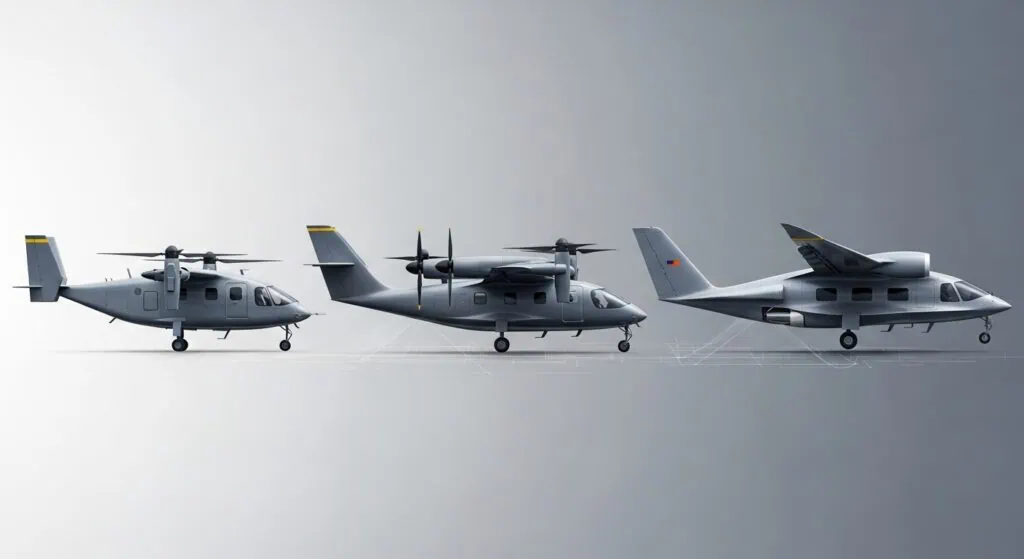
AutoFlight (China): Develops Prosperity I with 250km range, targeting cargo and passenger operations across Asia-Pacific markets.
AeroMobil (Slovakia): Creates flying car combining road and air travel capabilities, targeting personal transportation rather than commercial operations.
Opener (USA): Develops BlackFly ultralight eVTOL for personal use, requiring no pilot license for operation under specific regulations.
Jetson (Sweden): Manufactures ONE personal eVTOL available for consumer purchase, focusing on recreational and personal transportation markets.
Klein Vision (Slovakia): AirCar prototype demonstrates successful road-to-air transformation, targeting dual-mode transportation solutions.
Urban Aeronautics (Israel): Develops Fancraft with enclosed rotors for safety, targeting emergency services and urban operations.
Pipistrel (Slovenia): Nuuva cargo eVTOL for autonomous delivery operations, leveraging electric aircraft certification experience.
VoltAero (France): Cassio hybrid-electric aircraft combining electric and conventional propulsion for extended range capabilities.
Wright Electric (USA): Focuses on regional passenger aircraft electrification, targeting 100+ passenger capacity for airline operations.
Eviation (Israel): Alice aircraft for regional passenger service with 9-passenger capacity and 400-mile range capabilities.
Heart Aerospace (Sweden): ES-19 regional aircraft targeting 19-passenger capacity with hybrid-electric propulsion systems.
Rolls-Royce (UK): ACCEL program developing high-performance electric aircraft technology and propulsion systems.
Airbus (EU): Vahana and CityAirbus programs exploring urban air mobility and autonomous flight technologies.
Boeing (USA): Multiple eVTOL programs including autonomous passenger aircraft and cargo delivery systems development.
NASA (USA): Research programs supporting industry development through testing facilities and regulatory framework development.
eVTOL Companies by Region
North America
United States: Joby Aviation, Archer Aviation, Wisk, Beta Technologies, Supernal, Opener, Wright Electric Canada: Currently no major eVTOL manufacturers, but supportive regulatory environment for testing
Europe
Germany: Volocopter, Lilium United Kingdom: Vertical Aerospace, Rolls-Royce programs France: VoltAero, Airbus CityAirbus Slovakia: AeroMobil, Klein Vision Slovenia: Pipistrel Sweden: Jetson, Heart Aerospace
Asia-Pacific
China: EHang, AutoFlight South Korea: Supernal (Hyundai) Japan: SkyDrive, developing eVTOL for 2025 Osaka Expo Israel: Eviation, Urban Aeronautics Australia: AMSL Aero developing Vertiia aircraft
Emerging Markets
Brazil: Eve Air Mobility (Embraer) India: ePlane Company developing hybrid eVTOL Middle East: Limited domestic development but strong market interest
Regional concentrations reflect government support, aerospace industry presence, and regulatory frameworks. North American eVTOL companies benefit from FAA certification pathways and venture capital availability. European manufacturers leverage EASA coordination and sustainability focus. Asian markets emphasize autonomous technology and dense urban applications.
Which eVTOL Company Will Launch First?
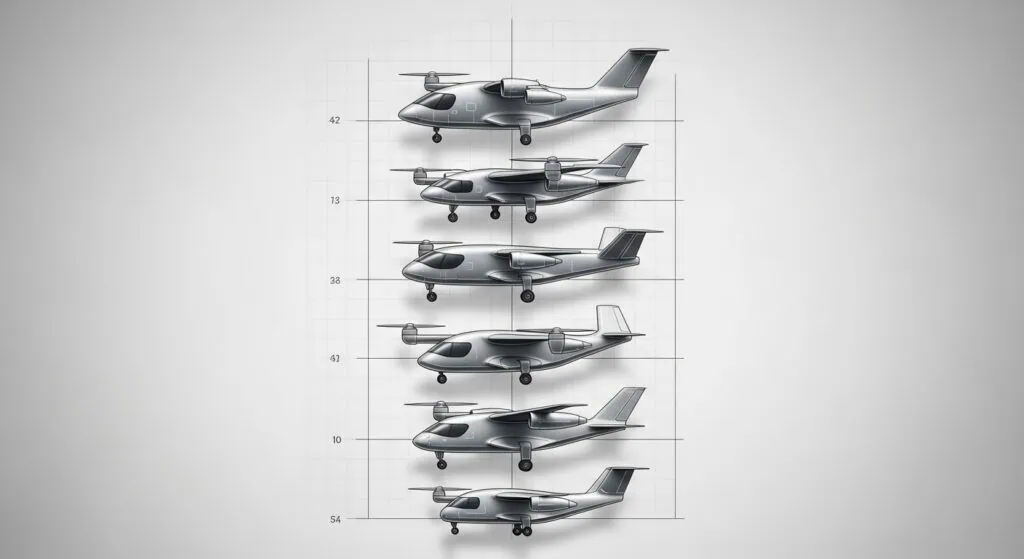
The race among eVTOL companies for first commercial operations involves multiple factors beyond certification progress. While Joby Aviation leads FAA certification completion, EHang already operates commercially in China under specific regulatory frameworks.
First Commercial Operations (Already Operating): EHang’s EH216-S operates commercially in China for demonstration flights, tourist operations, and specific route services. Chinese regulatory framework allows earlier commercial deployment compared to FAA or EASA requirements.
Anticipated 2025 Launches: Archer Aviation targets late 2025 operations in select markets, potentially achieving first U.S. commercial flights. Their aggressive timeline depends on certification completion and operational approvals.
Likely 2026 Commercial Leaders: Joby Aviation’s methodical certification approach positions them for sustainable 2026 launch with comprehensive operational capabilities. Volocopter may achieve European operations simultaneously through EASA certification.
Key Determining Factors: Certification completion represents only one launch requirement. Operational approvals, pilot training, infrastructure deployment, and insurance frameworks must align for commercial service. Companies with comprehensive ecosystem development may launch faster than aircraft-only developers.
Market launch success depends more on operational readiness than first-mover advantage. eVTOL companies achieving safe, reliable, cost-effective operations will capture market share regardless of launch timing.
According to industry analysis from Vertical Flight Society, regulatory approval timelines remain the primary uncertainty affecting launch schedules across all eVTOL companies.
eVTOL Companies Investment Analysis
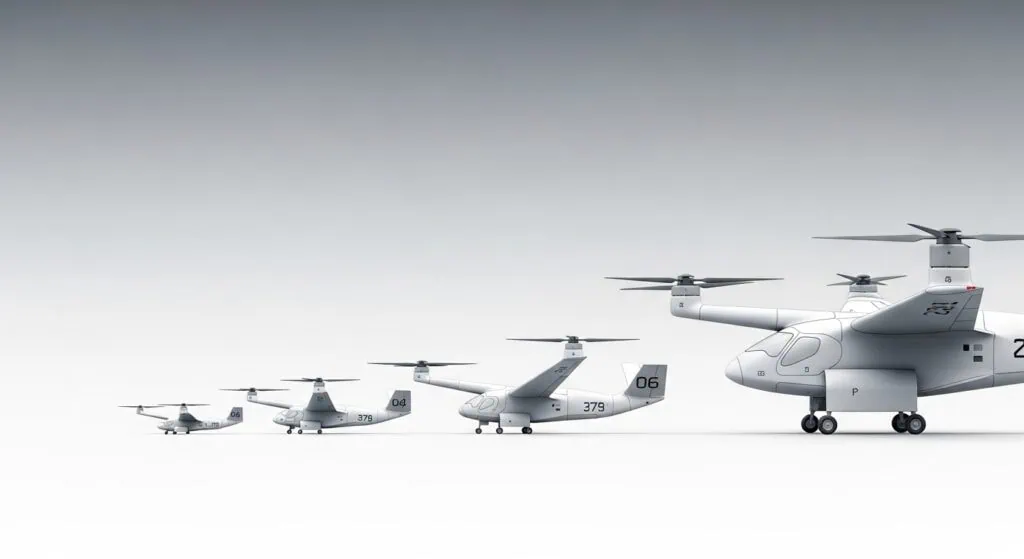
Investment levels among eVTOL companies reflect market confidence, technology maturity, and commercialization timelines. Total industry funding exceeds $15 billion, with significant variation in capital efficiency and deployment strategies.
Highest Funded Companies:
- Joby Aviation: $2.2 billion (public company with strategic investors)
- Archer Aviation: $1.8 billion (public company with airline partnerships)
- Supernal: $1.5 billion (Hyundai internal funding allocation)
- Wisk: $1.2 billion (Boeing strategic backing)
Funding Sources Evolution: Early-stage eVTOL companies relied on venture capital and private investors. Mature companies access public markets, strategic partnerships, and government contracts. Industry consolidation may accelerate as funding requirements increase for certification and manufacturing.
Capital Efficiency Considerations: Companies require substantial ongoing funding for certification completion, manufacturing scaling, and operational deployment. Cash burn rates among leading eVTOL companies range from $100-300 million annually, requiring continuous capital access.
Investment Risk Factors: Regulatory approval uncertainty, technology validation requirements, and market adoption timelines create investment risks. Companies with diversified funding sources and strategic partnerships demonstrate lower execution risk.
The investment landscape favors eVTOL companies with clear certification pathways, manufacturing partnerships, and operational strategies rather than technology development alone.
Future of Flying Taxi Manufacturers
The eVTOL companies industry stands at a critical inflection point as technology development transitions to commercial operations. Success factors extend beyond aircraft design to encompass regulatory approval, manufacturing scaling, and sustainable business models.
Industry Consolidation Trends: Market dynamics favor eVTOL companies with comprehensive capabilities spanning aircraft development, manufacturing, and operations. Smaller manufacturers may partner with or be acquired by larger players seeking technology or market access.
Technology Evolution: Battery technology improvements, autonomous flight systems, and manufacturing cost reduction will determine competitive positioning among eVTOL companies. Companies adapting quickly to technological advances maintain advantages.
Market Expansion Opportunities: Initial urban air mobility markets will expand to regional routes, cargo operations, and specialized applications. eVTOL companies with flexible aircraft designs and operational models capture broader market opportunities.
Regulatory Framework Development: Continued regulatory evolution in major markets will shape industry structure and competitive dynamics. eVTOL companies influencing regulatory development through early engagement and safety demonstration maintain strategic advantages.
The transformation from experimental aircraft to commercial aviation represents the most significant change in aviation since jet propulsion, with eVTOL companies leading this revolutionary shift in transportation.
Key Takeaways: eVTOL Companies Landscape
Market Leadership: Joby Aviation and Archer Aviation lead U.S. eVTOL companies in certification progress, while EHang operates commercially in China under specific regulatory frameworks.
Global Distribution: Over 25 eVTOL companies span North America, Europe, and Asia-Pacific, with regional concentrations reflecting government support and aerospace industry presence.
Investment Reality: Industry funding exceeds $15 billion, with leading eVTOL companies requiring $100-300 million annually for certification and manufacturing development.
Launch Timeline: First commercial operations target 2025-2027, with certification completion, operational approvals, and infrastructure development determining actual launch timing.
Technology Diversity: eVTOL companies pursue various approaches including multicopter, tilt-wing, ducted fan, and conventional aircraft designs for different market applications.
Commercial Readiness: Success among eVTOL companies depends on comprehensive ecosystem development beyond aircraft manufacturing, including operations, infrastructure, and regulatory compliance.
The flying taxi revolution progresses from prototypes to commercial reality, with eVTOL companies reshaping urban transportation through innovative aircraft technology and sustainable aviation solutions.
Industry Resources: For deeper analysis of leading manufacturers, explore our comprehensive eVTOL manufacturers ranking and eVTOL vs helicopter cost comparison. Understanding the practical implications requires examining the truth about flying taxis and broader electric aircraft market developments.
Related Analysis:
- eVTOL Manufacturers Market Position and Certification Progress
- Flying Taxi Economics and Operational Viability
- Urban Air Mobility Reality Check and Timeline
Research Methodology: Company data compiled from official sources, SEC filings, certification authorities including FAA Advanced Air Mobility, EASA certification programs, and industry analysis from Vertical Flight Society as of January 2025. Funding and timeline information reflects publicly disclosed data and may change based on market conditions and regulatory developments.








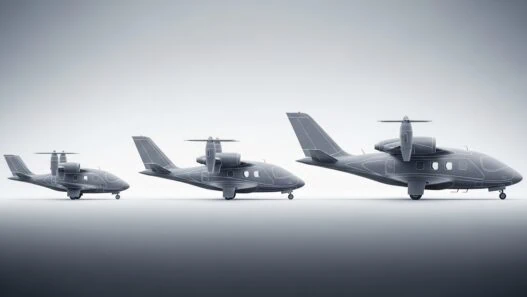
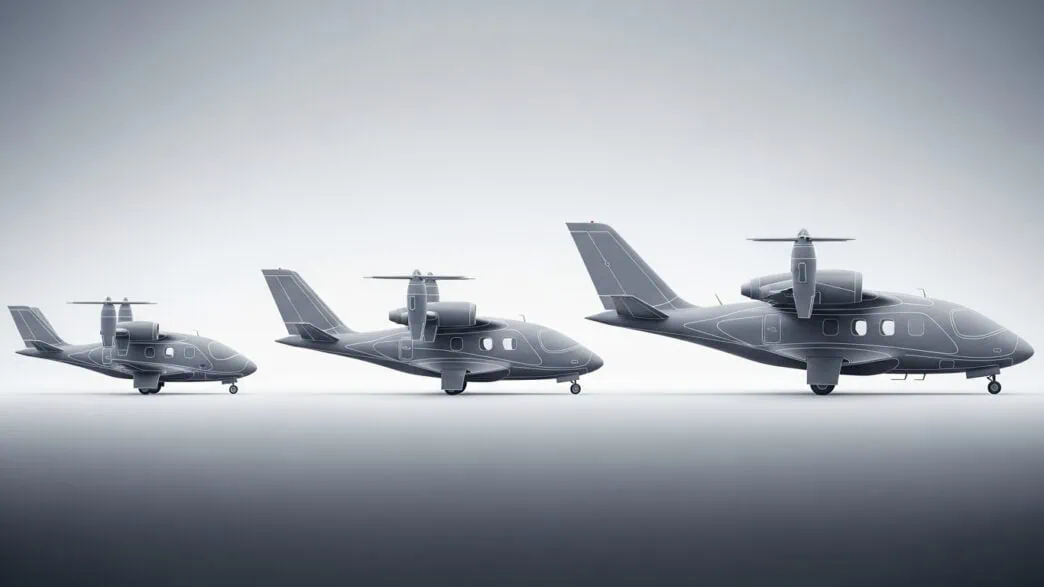



![Apple Vision Pro Complete Review: Ultimate 2025 Guide - Is It Worth $3,500? 25 Apple Vision Pro headset displayed on modern desk with soft lighting fashion magazine style photography"]](http://www.privatecharterx.blog/wp-content/uploads/2025/08/romeo-a-TGQQbDoG2C4-unsplash-scaled-527x703.jpg)





